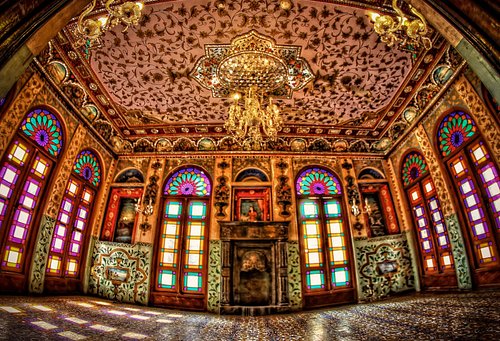Golestan Palace, located in the heart of Tehran, is one of Iran’s most significant historical landmarks. It was the royal residence of the Qajar dynasty, who ruled Iran from 1794 to 1925. The palace complex is a masterpiece of Persian architecture and art, featuring stunning gardens, impressive architecture, and breathtaking tile work.
The golestan palace was first built during the Safavid dynasty in the 16th century, but it was destroyed by the Afghans in the 18th century. It was rebuilt during the Qajar period under the orders of Fath Ali Shah, who wanted to create a magnificent royal palace that would reflect the power and glory of the Qajar dynasty.
The Golestan palace complex is divided into several buildings and courtyards, each with its own unique architecture and design. The most notable structures in the complex include the Shams-ol-Emareh, the Marble Throne, the Diamond Hall, and the Hall of Mirrors.
The Shams-ol-Emareh, which means “Sun Building,” is a two-story building with a combination of Iranian and European architectural styles. The building’s most distinctive feature is its two towers, which offer stunning views of Tehran. The first floor of the Shams-ol-Emareh was used for official ceremonies, while the second floor was reserved for the king’s private use.
The Marble Throne is another significant structure in the Golestan palace complex. It was built during the reign of Naser al-Din Shah and features stunning tile work and marble carvings. The throne, which is located in the center of the hall, was used for coronations and other official ceremonies.
The Diamond Hall, also known as the Mirror Hall, is a beautiful chamber adorned with exquisite mirror work. The hall was used for receptions and other formal events during the Qajar period.
The Hall of Mirrors is another magnificent chamber in the Golestan palace complex. The hall’s walls are covered in intricate mirror work, which reflects light in all directions and creates a stunning visual effect. The hall was used for private meetings and gatherings during the Qajar period.
In addition to the stunning architecture and design, the Golestan palace complex also features beautiful gardens and fountains. The gardens are divided into several sections, each with its own unique design and style. The most notable gardens in the complex include the Marble Throne Garden, the Golden Pond Garden, and the Cypress Garden.
The Marble Throne Garden is located in front of the Marble Throne Hall and features a large pool and several fountains. The garden’s design is inspired by traditional Persian gardens, with tall cypress trees and colorful flowers.
The Golden Pond Garden is another stunning garden in the Golestan palace complex. It features a large pond surrounded by lush vegetation and beautiful flowers. The garden’s design is inspired by traditional Chinese gardens and is a testament to the Qajar dynasty’s love of art and culture from around the world.
The Cypress Garden is located at the back of the Golestan palace complex and features tall cypress trees and a beautiful fountain. The garden’s design is simple and elegant, with a focus on natural beauty and tranquility.
Today, Golestan Palace is a UNESCO World Heritage site and is open to the public. Visitors can explore the palace complex and its stunning architecture and art, as well as enjoy the beautiful gardens and fountains. The Golestan palace complex also features several museums, including the Museum of Gifts and the Museum of Fine Arts, which showcase Iran’s rich cultural heritage.
In conclusion, Golestan Palace is a testament to Iran’s rich cultural heritage and history. The palace complex’s stunning architecture, art, and gardens offer a glimpse into the glory and power of the Qajar dynasty. Today, the Golestan palace complex remains an important cultural and historical landmark in Iran, attracting visitors from around the world who come to admire its
Golestan palace

